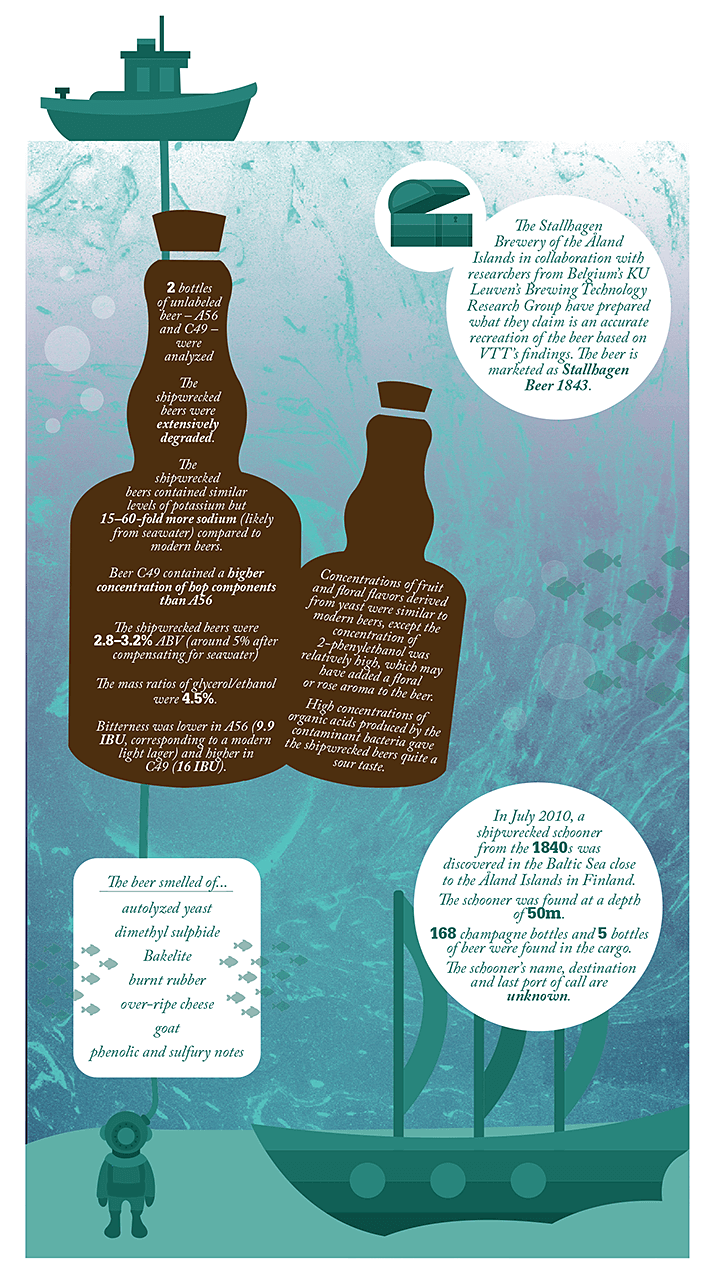Scientists from the Technical Research Centre of Finland (VTT) and the Technical University of Munich have analyzed two bottles of beer found in the cargo of a shipwrecked schooner, which is estimated to have sunk in the Baltic Sea in the 1840s.
“In many ways, the beers were similar to modern beers,” says Brian Gibson, a senior scientist at VTT and one of the study leaders. “They clearly contained malted grain and hops and were fermented with Saccharomyces yeast. They appeared quite clear suggesting some form of filtration, and the presence of iso-α-acids indicated that they had been boiled prior to fermentation, as is the case with all modern beers.”
Gibson and his colleagues performed a number of analyses on the beers using a variety of chromatography and spectrometry techniques (1). No live yeast cells were found in the bottles, but they did find live, mainly lactic acid bacteria, which are typical beer contaminants. “These bacteria had apparently survived for 170 years without any additional source of nutrition. These long-lived strains are currently being studied at VTT and we hope to learn more about their biology and in particular to understand how they survived for such a long time. This information will hopefully help us to more effectively control brewery contamination levels in the future,” says Gibson.
Find out more in our infographic.

References
- J. Londesborough et al., “Analysis of Beers from an 1840s’ Shipwreck,” J. Agric. Food Chem., 63 (9), 2525–2536 (2015).




